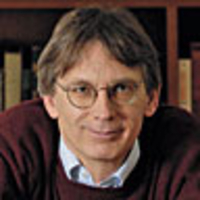Hitler was a man better known for burning books than reading them, and yet by the time he committed suicide aged 56 he had assembled a private library of 16,000 volumes. Here are some of his favorites.

Last of the Mohicans
James Fennimore Cooper's tales of the American frontier fascinated Hitler in his youth. “ Leatherstocking Tales and the Last of the Mohicans were the first,” Hitler recalled. Then Hitler discovered Karl May's adventure stories of the American West, which obsessed him for the rest of his life. During World War II, Hitler recommended that his generals read May to hone their military prowess. In moments of despair, Hitler himself reportedly turned to Karl May the way others might turn to the Bible.
ADVERTISEMENT

Miguel Cervantes, Don Quixote
Hitler ranked Don Quixote, along with Robinson Crusoe, Gulliver's Travels and Uncle Tom's Cabin, among the great works of world literature. “Each of these works is a grandiose idea in and of itself,” he claimed. Hitler was especially taken with Gustav Doré's 19th Century illustrations of Cervantes's delusional errant knight who wreaked havoc upon himself and the world.

Shakespeare
Hitler evidently imbibed his Hamlet. “To be or not to be,” was a favorite phrase, as was “What's Hecuba to him, or he to Hecuba.” He was also fond of Julius Caesar. In a 1926 sketchbook he drew a detailed stage set for the opening act. “We will meet again at Phillipi,” he threatened opponents on more than one occasion. He is said to have reserved the Ides of March for momentous occasions. He had a ten volume translation of Shakespeare's collected works bound in leather with a swastika and his initials embossed on the spine.

Henrik Ibsen, Peer Gynt
Today, Peer Gynt is better known for the ethereal music it inspired in Edvard Grieg than for its story of a young man blazing a path deceit, betrayal, murder and destruction across Europe and North Africa in his ruthless bid to become “king of the world.” Hitler first saw this stage adaptation as a thirty-something political upstart in the company of his mentor Dietrich Eckart who adapted this tale of a “Nordic Faust” for the German stage. He was still talking about the experience more than a quarter century later.

Worte Christi, The Words of Christ
Hitler considered the Bible the world's most significant work. His surviving books suggest a sustained interest in religious and spiritual matters, scores of volumes collected across a quarter century. One leather bound volume, “ Words of Christ,” contains scripture selected and annotated by Houston Stewart Chamberlain, a British anti-Semite who advanced the theory that Jesus Christ descended from an Aryan tribe that had wandered into the Middle East.
Henry Ford, The International Jew: The World's Foremost Problem

In 1923, a New York Times correspondent reported that Hitler had stacks of Ford's ant-Semitic treatise The International Jew: The World's Foremost Problem, originally published in the Dearborn Independent, on a table in the foyer outside his Munich office and a portrait of the American industrialist on his wall. Hitler called Ford his “inspiration” and included The International Jew on a short list of books titled, “Books that every National Socialist should read.”

Madison Grant, The Passing of the Great Race.
Hitler described Madison Grant's 1916 bestselling paean to Teutonic supremacy as his “Bible.” In this unabashedly racist tract, Grant cautions Americans about the corrosive effects of immigrants and former slaves, observing that “speaking English, wearing good clothes, and going to school and to church, does not transform a negro into a white man.” In this electoral season, it is reassuring to see how far Americans have distanced themselves from such racist sentiment. It is also a chilling reminder of where such thinking can lead.

Mein Kampf
Hitler was the hero of his own life, and, to his mind, of all Germany. In Mein Kampf, his notoriously unreadable political autobiography, Hitler described his transformation from aspiring artist to political activist, and outlined his future social agenda in explicit and tragically prescient terms. In one chapter, he writes about “putting the Jews under gas.” A 1942 edition, taken from the Berlin bunker where Hitler committed suicide, contains the Nazi leader's personal bookplate.

Sven Hedin, America in the Battle of the Continents
History is, of course, written by the victor. Sven Hedin's America in the Battle of the Continents, chronicles Hitler's alleged efforts to prevent the outbreak of war in 1939 and to save Europe from Soviet domination. Hitler read America one evening in November 1942, at the height of his power, and sent Hedin a letter the next day thanking him for setting the record straight. Following the defeats at El Alamein and Stalingrad, the tide of war turned, as did this page of Hitler's history of the Second World War.
Thomas Carlyle, History of Friedrich II of Prussia, Called Frederick the Great
In spring 1945, Hitler returned to one of his favorite books, Thomas Carlyle's biography of Frederick the Great, the 18th century warrior king saved from ruin by the sudden death a Russian ruler. When Roosevelt's unexpected death failed to deliver a similar “miracle,” Hitler committed suicide. Hitler's deathbed reading makes for an appropriate bookend to a life consumed by intellectual insecurity. William Butler Yeats once called Carlyle “the chief inspirer of self-educated men.”
Timothy W. Ryback's Hitler's Private Library is published this month by Knopf.
Related: Hitler's Private Library: An Excerpt





